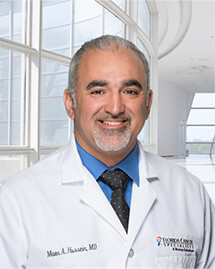Overall Survival with Inavolisib in PIK3CA-Mutated Advanced Breast Cancer
The INAVO120 trial evaluated inavolisib + palbociclib–fulvestrant vs placebo + palbociclib–fulvestrant in patients with PIK3CA-mutated, HR+/HER2– advanced breast cancer progressing on or shortly after adjuvant endocrine therapy (ET). Inavolisib significantly improved overall survival (OS) (34.0 vs 27.0 mo) and progression-free survival (PFS) (17.2 vs 7.3 mo), with a higher objective response rate (ORR) (62.7% vs 28.0%) and longer DoR (19.2 vs 11.1 mo). Toxicities were manageable but included more hyperglycemia (63.4%), stomatitis (55.3%), GI, and ocular AEs. Bottom line: this triplet sets a new bar for first-line PIK3CA-mutant HR+ MBC, but we’ll need to stay vigilant about metabolic and mucosal side effects as we bring it into practice.
